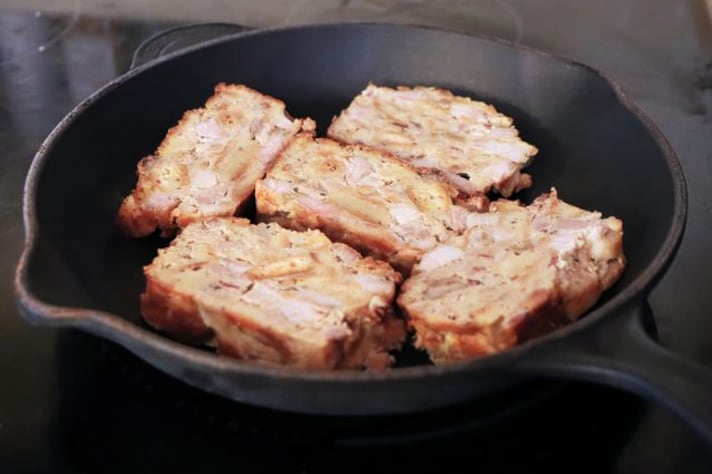
If you’re unfamiliar with scrapple, you’re not alone. It’s a dish that either inspires curiosity or a bit of trepidation, depending on who you ask. A longtime staple in certain parts of the United States, scrapple is beloved by some and practically unknown to others. But let’s dig into what makes scrapple, well, scrapple.
So What the Heck is Scrapple, Exactly?
Scrapple is a mixture of pork scraps and trimmings, combined with cornmeal, flour, and spices. Traditionally, it uses the less-prized parts of the pig—think the liver, heart, and even snout. These ingredients are boiled down, ground, and mixed with cornmeal to create a thick, hearty loaf. Once set, this loaf is sliced and pan-fried until it’s golden brown, crispy on the outside, and warm on the inside.
Is Scrapple a Healthy Choice?
When it comes to health, scrapple sits in a gray area. On one hand, it’s high in protein and uses parts of the pig that might otherwise go to waste—a sustainable choice, some might argue. However, scrapple is also quite high in fat and sodium, especially when pan-fried. While it’s okay as an occasional indulgence, it’s best not to make scrapple your everyday breakfast item.

What Does Scrapple Taste Like?
So, what exactly does scrapple taste like? If you’re expecting it to be similar to bacon or sausage, think again. Scrapple has a uniquely savory, slightly earthy flavor, and the texture is soft yet crispy. The spices used, like sage and pepper, give it a mild, comforting taste with hints of pepperiness that sets it apart from sausage or bacon.
A Mid-Atlantic Specialty
Scrapple is most popular in the Mid-Atlantic region, particularly in Pennsylvania, Maryland, and Delaware. It’s considered a northern specialty rather than a southern one, largely due to its origins with Pennsylvania Dutch settlers who were experts at using every part of the animal. The dish hasn’t traveled widely outside these areas, which is why some people in other parts of the U.S. might never have encountered it.

Despite its rich history, scrapple remains a bit of a mystery to those outside its stronghold. The unusual ingredients and unfamiliar texture can make it a “hard sell” for the uninitiated. Still, for those in the know, scrapple is a delicious reminder of a time when no part of the animal went to waste and thriftiness was a virtue.
;Resize,width=767;)
